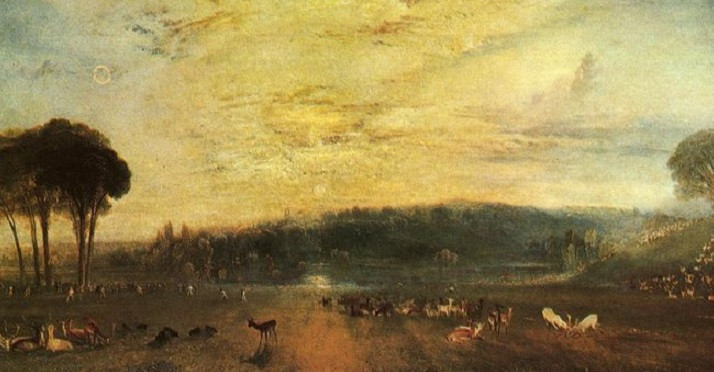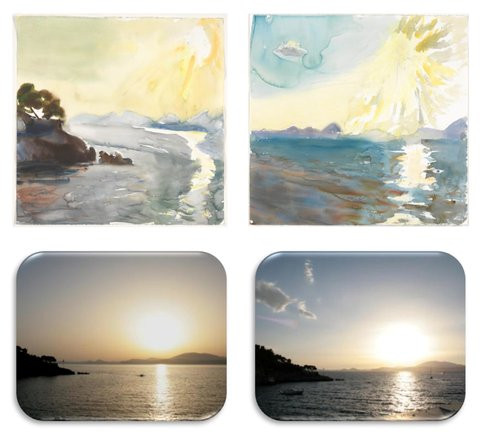Great Masters' 19th Century Paintings Build Timeline of Earth's Past Pollution Levels

Scientists are using the paintings of great masters to create a timeline of the history of air pollution, while retrieving information on the composition of the past atmosphere.
When the Tambora volcano in Indonesia erupted in 1815, artists in Europe could see the colour of the sky changing. Plumes of volcanic ash and gas spewed into the atmosphere across the world, and as the aerosol particles dispersed sunlight, they produced bright red and dense sunsets in Europe for up to three years after the eruption.
J. M. W. Turner, British landscape and portrait painter whose work is largely regarded as the Romantic preface to impressionism, was one of the artists who painted sunsets during that period.
Greek and German scientists are now using his work, along with pieces from other artists, to estimate pollution levels in Earth's past atmosphere. In particular, the paintings reveal that the ash and gas released makes sunsets appear more red.
The results are being published in Atmospheric Chemistry and Physics, an open access journal of the European Geosciences Union.

Christos Zerefos, a lead author of the study and professor of atmospheric physics at the Academy of Athens, said: "Nature speak to the hearts and souls of great artists.
He added: "But we have found that, when colouring sunsets, it is the way their brains perceive greens and red that contains important environmental information."
Zerefos and his team analysed hundreds of high-quality digital photographs of sunset paintings done between 1500 and 2000, a period including over 50 large volcanic eruptions around the globe.
Searching for relative amounts of red and green along the horizon of each painting, they hoped to discover information on the amount of aerosols in the atmosphere.
He explained: "We found that red-to-green ratios measured in the sunsets of paintings by great masters correlate well with the amount of volcanic aerosols in the atmosphere, regardless of the painters and of the school of painting."
As part of the study, the researchers also asked a famous artist to paint sunsets during and after the passage of the Saharan dust cloud over the island of Hydra in June 2010. They were unaware of the dust event.
The scientists then compared measurements of the aerosol optical depth made by modern instruments with those estimated from the red-to-green ratios of the paintings and of digital photographs, and found that they all matched well.
Skies more intensely polluted by volcanic ash scatter sunlight more, so they appear more red. Similar effects are seen with mineral (desert dust) or man-made aerosols. In addition, air with a higher amount of aerosols has a higher "aerosol optical depth" - a parameter the team calculated using the red-to-green ratios in the paintings.
These values were then compared with those given by independent proxies such as ice-core and volcanic-explosivity data. They were found to validate ideas of the team's 2007 study, published in Atmospheric Chemistry and Physics.
As aerosols scatter sunlight, less of it reaches the surface which leads to cooling. The Tambora eruption, which is the largest in recorded history, killed around 10,000 people directly and over 60,000 more due to starvation and disease during the aftermath of the "volcanic winter".
According to Wired, many Europeans and North Americans dubbed 1816 the "year without a summer" due to the phenomenon.
Aerosol optical depth can be directly used in climate models, so having estimates for this parameter helps researchers understand how aerosols have affected the Earth's climate in the past.
As reported in LiveScience, the results could help researchers better understand the effects of a atmospheric phenomenon called global dimming, in which aerosols block sunlight.
Zerefos added: "We wanted to provide alternative ways of exploiting the environmental information in the past atmosphere in places where, and in centuries when, instrumental measurements were not available."
© Copyright IBTimes 2025. All rights reserved.






















